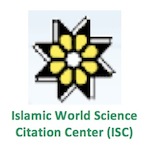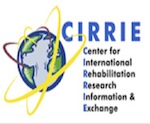Prevalence of Major Depressive Disorder and its association with erectile dysfunction among clients on Methadone Maintenance Therapy
1Department of Psychiatry, Faculty of Medicine, Selangor Campus, Universiti Teknologi MARA, Selangor, Malaysia
2Department of Psychiatry, Tengku Ampuan Rahimah Hospital, Selangor, Malaysia
3Department of Psychiatry, Discipline of Population Health & Preventive Medicine, Selangor, Malaysia
*Corresponding Author:
Salina Mohamed MPM, Department of Psychiatry, Faculty of Medicine, Selangor Campus, Universiti Teknologi MARA, Selangor,
Malaysia,
Email: salina_mohamed@hotmail.com
Received: 16-May-2021
Published:
02-Jul-2021
Introduction
Globally, the use of opiates had affected 16.5 million people, or 0.4% of the population aged between 15 to 64 years old. High prevalence of its use reported in the regions of South-West and Central Asia, Eastern and South-Eastern Europe as well as North America [1]. In Malaysia, the cumulative number of registered substance abusers between 1988 to 2006 was 300,241 and 60.7% of them were opioid users. In the number had increased to 75% [2]. Methadone Maintenance Therapy (MMT) program was introduced in 2005 as part of the National Harm Reduction Program in Malaysia in response to rising numbers of opioid users [3]. Methadone has several adverse effects which include nausea, vomiting, constipation, drowsiness, abdominal pain, QTc prolongation, and sexual dysfunction [4]. Among the commonest side effect of sexual dysfunction is erectile dysfunction. A systemic review and meta-analysis involving 17 studies demonstrated that testosterone level was suppressed in men with chronic and regular opioid use which leads to ED [5]. Earlier studies have reported that higher methadone dosage (80-150 mg/day) was associated with lower plasma testosterone [6]. Studies had been more consistent in reporting no correlation between the duration of methadone treatment and ED [7,8].
Testosterone deficiency symptoms are fatigue, weakness, mood disturbances, and sexual problems such as a decrease in libido and erectile dysfunction [9]. The chronic stimulation of the μ-opioid receptors by methadone also alters the function of the tuberoinfundibular axis and the dopaminergic control of prolactin, with a consequential impact on sexual functioning [10]. Among methadone clients, the worldwide prevalence of ED ranged from 52.8% to 75.7% [11]. In Malaysia, the prevalence of ED in methadone clients was between 67% to 68.5% [12,13]. However, only 3% reported that they had been asked about their sexual relationships by the addiction services [14] and sexual problems were often unexplored and the neglect was more pronounced in Asian populations due to it being regarded as a sensitive subject [15,16].
Major Depressive Disorder (MDD) was the most common mental illness in Malaysia affecting approximately 2.3 million people and the prevalence was estimated to be around 8% and 12% [17]. Globally, the prevalence of MDD ranges between 32.9% to 63.3% among methadone clients [18,19]. In the local setting, MDD was the most prevalent psychiatric disorder in clients on MMT ranging from 10.2% to 44.4% [18,19]. The development of MDD in drug abusers resulted from a familial and social problems as well as biological changes due to prolonged drug use. Studies showed there was significantly smaller grey matter volume (GMV) in multiple cortices, especially in the left inferior frontal gyrus and left cerebellar vermis in the MMT group compared to healthy subjects [20-22]. The smaller GMV in the pre-frontal cortices, left subcallosal, left insula, left post-central gyrus, cingulate gyrus, and right cerebellar declive correlated with higher depression scores. Thus there were significant structural differences in the emotion circuit and cerebellum between heroin-dependent patients on MMT and healthy controls [23,24]
Hallinan et al found that men on MMT had a high prevalence of ED, related to hypogonadism and depression compared to clients on Buprenorphine Maintenance Treatment. In a cross-national study conducted in Brazil, Italy, Japan, and Malaysia, depression was shown to be associated with erectile dysfunction and those with erectile dysfunction were 2.09 times more likely to have depression [25]. Similarly, Shiri et al., found a strong association between depressive symptoms and ED and this relationship was also bidirectional [26]. Also found a strong relationship between psychological distress and ED [27]. However, local studies showed contradicting results whereby it found no association between ED and depression among MMT clients. Hence, to resolve the disparity, this study aimed to determine the prevalence of MDD and its association with ED among MMT clients.
Methods
This was a cross-sectional observational study using a simple random sampling method conducted in Hospital Tengku Ampuan Rahimah (HTAR). Methadone Maintenance Therapy Outpatient clinic in HTAR has been established for about 15 years, led by an addiction psychiatrist, medical officers, nurses, and medical attendants with total registered male clients of 236. The participants of the study were recruited within the period between 1st Jun 2020 to 31st August 2020. The inclusion criteria were clients who were 18 years old and above having a sexual partner (defined as a person engaged in sexual activity with the client) and able to give informed consent and understand Malay or English language. Clients who were experiencing withdrawal, intoxication, active psychosis, irritable or agitated were excluded. Clients with an existing diagnosis of erectile dysfunction were excluded. Clients having chronic and severe medical illnesses such as chronic cardiovascular disease, cerebrovascular disease, respiratory disease, renal disease, urinary tract disease, autoimmune disease, and malignancy were excluded. Ethics approval was obtained from the Ministry of Health Medical Research and Ethics Committee (KKM/NIHSEC/P20-89(8) and Universiti Teknologi MARA Research Ethics Committee (REC/03/2020 FB/46).
The clients attending Methadone outpatient clinic who fulfilled the selection criteria and consented to participate in the study were given the Patient Health Questionnaire-9 (PHQ-9) and the International Index of Erectile Function-5 (IIEF-5) scale meanwhile the socio-demographic and clinical factors questionnaires were filled up by the researcher. The Patient Health Questionnaire-9 (PHQ-9 is a self-administered questionnaire used to screen the presence and the severity of depression [28]. The Malay version of PHQ-9 developed by Sherina et al was used [29]. Those who scored four and above for depressive symptoms were interviewed using MINI Neuropsychiatry Interview (MINI) 6.0 to confirm the diagnosis of MDD.
The MINI is a short, structured diagnostic interview tool for psychiatric disorders in Diagnostic and Statistical Manual of Mental Disorders Fourth Edition (DSM-IV) and International Classification of Diseases-Tenth Edition (ICD 10) which was developed by Sheehan and colleagues in 1998 [30,31]. The translated MINI Malay version is acceptable and clinically relevant in making a diagnosis of major depressive disorder [32]. The International Index of Erectile Function-5 (IIEF-5) was given to assess for erectile dysfunction. It was developed by Raymond C. Rosen in 1996. The erectile function was explored using an abridged five-item version of the International Index of Erectile Function (IIEF-5), a self-administered questionnaire that explores the quality of erectile function and sexual intercourse confidence and satisfaction for the past six months [33]. The validated in Malay version developed by was used.
The data were analyzed using the Statistical Package for Social Sciences (SPSS) version 25.0 (IBM). Variables were described as mean ± standard deviation (±SD) for continuous data and number (n) and percentage for dichotomous or nominal data. The factors associated with MDD were analyzed using simple logistic regression (SLogR) followed by the hierarchical method of multiple logistic regression (MLogR). The socio-demographic factors, clinical factors, and presence of ED being the independent variables were entered into the SLogR. Variables with a p-value of less than 0.25 from the SLogR were subsequently included in the MLogR analysis. Model fitness was checked using the Hosmer-Lemeshow goodness of fit test. Confounders were adjusted; interactions, multicollinearity, and assumptions were also checked. The p-value of less than 0.05 with a confidence interval of 95% was taken as statistically significant.
Results
Prevalence of MDD and ED
74 participants had mild to severe depressive symptoms on the PHQ-9 and among them 30.6% (n=49) (95% CI: 23.5–37.7) were diagnosed to have major depressive disorder. The prevalence of ED in this study was 72.5% (n=116) (95% CI: 65.6–79.4). There were 40 % of the participants (95% CI: 27–52.0) who had a mild degree of erectile dysfunction and 22.5 % (95% CI: 16.0–30.0) of them had mild to moderate level of erectile dysfunction. While 8.1% (95% CI: 2.0–14.0) of them had moderate erectile dysfunction and 1.9% (95% CI: 2.3–3.5%) had severe erectile dysfunction.
Sociodemographic and Clinical Characteristic
A total of 160 participants were involved in this study with the age ranging from 25 to 76 years old. The sociodemographic characteristics and clinical features are shown in Table 1. About two-thirds of the participants were more than 40 years old with a mean age of 44.81 ± 10.2 years. More than two-thirds of the participants were Malay (70%) and 71.2% were employed. 65% of the articipants received a secondary education and 3% received tertiary education. Employment profiling revealed that 114 (71.2%) were employed and 46 (28.8%) were unemployed.
| Variables |
n (%) |
Range |
Mean (SD) |
| Sociodemographic characteristics |
|
|
|
| Age |
|
25-76 |
44.81 (10.02) |
| ≤ 30 years old |
11 (6.9) |
|
|
| 31 – 40 years old |
47 (29.4) |
|
|
| 41 – 50 years old |
61 (38.1) |
|
|
| ≥51 |
41 (25.6) |
|
|
| Ethnicity |
|
|
|
| Malay |
112 (70.0) |
|
|
| Chinese |
32 (20.0) |
|
|
| Indian |
14 (8.8) |
|
|
| Others |
2 (1.2) |
|
|
| Education level |
|
|
|
| None |
4 (2.5) |
|
|
| Primary |
48 (30) |
|
|
| Secondary |
104 (65.0) |
|
|
| Tertiary |
4 (2.5) |
|
|
| Employment Status |
|
|
|
| Employed |
114 (71.2) |
|
|
| Unemployed |
46 (28.8) |
|
|
| Marital status |
|
|
|
| Single |
67 (41.9) |
|
|
| Married |
68 (42.5) |
|
|
| Widow |
10 (6.3) |
|
|
| Separated |
5 (3.1) |
|
|
| Divorced |
10 (6.2) |
|
|
| Income (RM) |
|
0-RM 5000 |
1010.38 (977.73) |
| 0-1000 |
85 (53.1) |
|
|
| 1001-2000 |
61 (38.1) |
|
|
| More than 2000 |
14 (8.8) |
|
|
| Clinical factors |
|
|
|
| Methadone duration (year) |
|
0.1-15 |
4.83 (3.71) |
| Current Methadone dose (mg) |
|
2 -130 |
54.22 (26.93) |
| Smoking |
|
|
|
| Non-smoker |
27 (16.9) |
|
|
| Smoker |
133 (83.1) |
|
|
| Heroin |
|
|
|
| No |
130 (81.2) |
|
|
| Yes |
30 (18.8) |
|
|
| Cannabis |
|
|
|
| No |
159 (99.4) |
|
|
| Yes |
1 (0.6) |
|
|
| Stimulants |
|
|
|
| No |
144 (90.0) |
|
|
| Yes |
16 (10.0) |
|
|
| Cocaine |
|
|
|
| No |
160 (100.0) |
|
|
| Yes |
0 |
|
|
| Benzodiazepines |
|
|
|
| No |
155 (96.9) |
|
|
| Yes |
5 (3.1) |
|
|
|
|
|
|
| Alcohol |
|
|
|
| No |
141 (88.1) |
|
|
| Yes |
19 (11.9) |
|
|
| Diabetes Mellitus |
|
|
|
| No |
154 (96.2) |
|
|
| Yes |
6 (3.8) |
|
|
| Hypertension |
|
|
|
| No |
137 (85.6) |
|
|
| Yes |
23 (14.4) |
|
|
| Dyslipidemia |
|
|
|
| No |
156 (97.5) |
|
|
| Yes |
4 (2.5) |
|
|
| Hepatitis B |
|
|
|
| No |
151 (94.4) |
|
|
| Yes |
9 (5.6) |
|
|
| Hepatitis C |
|
|
|
| No |
124 (77.5) |
|
|
| Yes |
36 (22.5) |
|
|
| HIV |
|
|
|
| No |
141 (88.1) |
|
|
| Yes |
19 (11.9) |
|
|
Table 1. Background characteristics of the patients (N=160)
The duration of methadone use was between one month to 15 years and the mean duration of usage was 4.83 (±3.71) years. The methadone dose prescribed was between 2 to 130 mg and the mean methadone dose is 54.22 (±26.93) mg. More than three-quarters of the clients were smokers (133; 83.1%) and 44.4% of clients were concomitantly using other illicit substances. 42.2% of clients took heroin, followed by alcohol (27%), stimulant (22.5%), benzodiazepine (7%), and cannabis (1%). There were 40% (64 clients) of the clients have existing comorbid medical illnesses with the highest recorded comorbidity was hepatitis C (56.2%) followed by hypertension (36%), HIV (29.6%), hepatitis B (9%), Diabetes mellitus (6%) and dyslipidaemia (4%). The results of bivariate analysis between sociodemographic factors with MDD. In the socio-demographic characteristics, there were three significant factors have been found. These were age (OR: 2.2 (95% CI: 1.03-4.63), p: 0.04), employment status (OR: 0.26 (95%CI: 0.12-0.53), p <0.001) and income (OR: 0.37 (95% CI: 0.18-0.76), p: 0.006). The other factors were not statistically significant (Table 2).
| Characteristics |
|
Depression |
|
|
|
|
Non depressed |
Depressed |
X2 |
OR |
p-value |
| n |
(N=101), |
(N=49), |
(df) |
(95%CI) |
|
|
n (%) |
n (%) |
|
|
|
| Age |
|
|
|
4.227 |
2.182 |
0.040* |
| 40 and less |
58 |
46 (79.3) |
12 (20.7) |
-1 |
(1.028, 4.632) |
|
| More than 40 |
102 |
65 (63.7) |
37 (36.3) |
|
|
|
| Ethnicity |
|
|
|
|
|
|
| Malay |
112 |
79 (70.5) |
33 (29.5) |
0.237 |
0.835 |
0.627 |
| Non-Malay |
48 |
32 (66.7) |
16 (33.3) |
-1 |
(0.405, 1.724) |
|
| Education level |
|
|
|
1.886 |
0.613 |
0.17 |
| Primary and less |
53 |
33 (62.3) |
20 (37.7) |
-1 |
(0.305, 1.236) |
|
| Secondary and more |
107 |
78(72.9) |
29 (27.1) |
|
|
|
| Employment |
|
|
|
14.111 |
0.257 |
<0.001* |
| Employed |
114 |
89 (78.1) |
25 (21.9) |
-1 |
(0.124, 0.534) |
|
| unemployed |
46 |
22 (47.8) |
24 (52.2) |
|
|
|
| Marital status |
|
|
|
2.802 |
0.55 |
0.094 |
| Married |
68 |
52 (76.5) |
16 (23.5) |
-1 |
(0.272, 1.112) |
|
| Single/ Divorced/ Widow/widower |
92 |
59 (64.1) |
33 (35.9) |
|
|
|
| Income (RM) |
|
|
|
7.501 |
0.375 |
0.006* |
| 1000 and less |
85 |
51 (60.0) |
34 (40.0) |
-1 |
(0.184, 0.765) |
|
| More than 1000 |
75 |
60 (80.0) |
15 (20.0) |
|
|
|
Note: f p-value based on fisher’s exact test; *: p<0.05; OR=odd ratio; CI: confidence interval
Table 2. Association between sociodemographic characteristics and major depressive disorder (N=160)
Factors Associated With MDD in MMT Clients
The results of bivariate analysis between clinical factors with MDD. There were seven significant factors have been found. There were: smoking status (OR: 0.4 95% (CI: 0.17-0.93), p: 0.03), stimulant usage (OR: 3.34 (95% CI: 1.17-9.58), p: 0.019), heroin usage (OR: 3.36 (95% CI: 1.48-7.61), p: 0.003), benzodiazepines usage (OR: 9.78 (95%CI: 1.06, 89.90), p=0.03), Hepatitis C status (OR: 2.2 (95% CI: 1.02-4.75), p=0.041), HIV status (OR: 8.48 (95%CI: 2.85- 25.23), p:<0.001) and ED (OR: 14.30 (95% CI: 2.3.30, 61.97), p:<0.001) (Table 3).
| Characteristics |
|
Depression |
|
|
|
| X2 |
OR (95%CI) |
p-value |
| n |
Non depressed |
Depressed |
(df) |
|
(N=101), n (%) |
(N=49), n (%) |
|
|
|
| Methadone duration (years) |
|
|
|
0.741 |
1.371 (0.668, 2.816) |
0.389 |
| -1 |
| < 5 |
112 |
80 (71.4) |
32 (28.6) |
|
|
|
| > 5 |
48 |
31 (64.6) |
17 (35.4) |
|
|
|
| Current methadone dose |
|
|
|
2.92 |
2.076 (0.888, 4.849) |
0.088 |
| -1 |
| < 80mg |
133 |
96 (72.2) |
37 (27.8) |
|
|
|
| > 80mg |
27 |
15 (55.6) |
12 (44.4) |
|
|
|
| Smoking |
|
|
|
4.694 |
0.400 (0.171, 0.932) |
0.030* |
| -1 |
| Non-smoker |
27 |
14 (51.9) |
13 (48.1) |
|
|
|
| Smoker |
133 |
97 (72.9) |
36 (27.1) |
|
|
|
| Heroin |
|
|
|
8.962 |
3.359 (1.481, 7.618) |
0.003* |
| -1 |
| No |
130 |
97 (74.6) |
33 (25.4) |
|
|
|
| Yes |
30 |
14 (46.7) |
16 (53.3) |
|
|
|
| Stimulants |
|
|
|
5.494 |
3.343 (1.166, 9.580) |
0.019*f |
| -1 |
| No |
144 |
104 (72.2) |
40 (27.8) |
|
|
|
| Yes |
16 |
7 (43.8) |
9(56.2) |
|
|
|
| Benzodiazepines |
|
|
|
5.922(1) |
9.778 (1.063, 89.900) |
0.031* |
| No |
155 |
110 (71.0) |
45 (29.0) |
|
|
|
| Yes |
5 |
1 (20.0) |
4 (80.0) |
|
|
|
| Alcohol |
|
|
|
0.009(1) |
1.052 (0.375, 2.951) |
0.923 |
| No |
141 |
98 (69.5) |
43 (30.5) |
|
|
|
| Yes |
19 |
13 (68.4) |
6 (31.6) |
|
|
|
| Diabetes Mellitus |
|
|
|
3.811(1) |
4.844 (0.857, 27.395) |
0.051 |
| No |
154 |
109 (70.8) |
45 (29.2) |
|
|
|
| Yes |
6 |
2 (33.3) |
4 (66.7) |
|
|
|
| Hypertension |
|
|
|
0.219(1) |
1.249 (0.491, 3.174) |
0.64 |
| No |
137 |
96 (70.1) |
41 (29.9) |
|
|
|
| Yes |
23 |
15 (65.2) |
8 (34.8) |
|
|
|
| Dyslipidemia |
|
|
|
0.725(1) |
2.319 (0.317, 16.959) |
0.395f |
| No |
156 |
109 (69.9) |
47 (30.1) |
|
|
|
| Yes |
4 |
2 (50.0) |
2 (50.0) |
|
|
|
| Hepatitis B |
|
|
|
0.857(1) |
1.884 (0.484, 7.344) |
0.458f |
| No |
151 |
106 (70.2) |
45 (29.8) |
|
|
|
| Yes |
9 |
5 (55.6) |
4 (44.4) |
|
|
|
| Hepatitis C |
|
|
|
|
2.206 (1.023, 4.758) |
0.041* |
| No |
124 |
91 (73.4) |
33 (26.6) |
4.175(1) |
|
|
| Yes |
36 |
20 (55.6) |
16 (44.4) |
|
|
|
| HIV |
|
|
|
18.815(1) |
8.480 (2.850, 25.229) |
<0.001* |
| No |
141 |
106 (75.2) |
35 (24.8) |
|
|
|
| Yes |
19 |
5 (26.3) |
14 (73.7) |
|
|
|
| Erectile Dysfunction |
|
|
|
19.428 (1) |
|
|
| Yes |
116 |
69(59.5) |
47(40.5) |
|
14.304(3.302,61.974) |
<0.001* |
| No |
44 |
42(95.5) |
2(4.5) |
|
|
|
Note: f p-value based on fisher’s exact test; *: p<0.05; OR: odd ratio; CI: confidence interval
Table 3: Association between clinical factors and major depressive disorder (N=160)
The bivariate analysis had identified variables as potential covariates for the multivariate analysis at an alpha level of 0.25. In multiple logistic regression analysis, adding the erectile dysfunction to the first model explained 19.9% (Nagelkerke R2) of variance in major depressive disorder. In this model, erectile dysfunction was noted to be a factor contributing to MDD. Adding the sociodemographic characteristics to the second model explained 29.6% (Nagelkerke R2) of variance in major depressive disorder. In this model, the significant predictors were identified to be erectile dysfunction and employment status. In the third model, adding the substance usages explained 41.2% (Nagelkerke R2) of variance in major depressive disorder. In this model, the significant predictors were identified to be erectile dysfunction, smoking, and heroin usage. While adding the medical comorbidities in the fourth model (final model) explained 43.7% (Nagelkerke R2) of variance in the major depressive disorder. The final model indicated that smoking and erectile dysfunction are the factors contributing to major depressive disorder in this study. The summary of the final model is shown in (Table 4).
| Variables |
B |
S.E. |
Wald |
Adjusted OR |
p-value |
95% CI |
|
Lower |
Upper |
| ED status |
-2.412 |
0.813 |
8.808 |
0.09 |
0.003* |
0.018 - 0.441 |
| [yes] |
|
|
|
|
|
|
| Diabetes Mellitus |
-1.303 |
1.05 |
1.54 |
0.272 |
0.215 |
0.035 - 2.127 |
| [no] |
|
|
|
|
|
|
| Hepatitis C |
-0.075 |
0.557 |
0.018 |
0.928 |
0.893 |
0.312 - 2.763 |
| [no] |
|
|
|
|
|
|
| HIV |
-1.179 |
0.75 |
2.47 |
0.307 |
0.116 |
0.071 - 1.338 |
| [no] |
|
|
|
|
|
|
| Age |
-0.303 |
0.505 |
0.361 |
0.739 |
0.548 |
0.275 - 1.985 |
| [40 and less] |
|
|
|
|
|
|
| Education |
-0.563 |
0.52 |
1.171 |
0.569 |
0.279 |
0.205 - 1.579 |
| [primary and none] |
|
|
|
|
|
|
| Employment status |
0.73 |
0.573 |
1.626 |
2.076 |
0.202 |
0.675 - 6.381 |
| [unemployed] |
|
|
|
|
|
|
| Marital status |
0.022 |
0.486 |
0.002 |
1.022 |
0.964 |
0.394 - 2.650 |
| [single/widow/ |
|
|
|
|
|
|
| separated/ |
| divorcee] |
| Income (RM) |
0.313 |
0.558 |
0.314 |
1.367 |
0.575 |
0.458 - 4.083 |
| [1000 and less] |
|
|
|
|
|
|
| Methadone dose |
-0.748 |
0.623 |
1.44 |
0.473 |
0.23 |
0.140 - 1.606 |
| [80mg and less] |
|
|
|
|
|
|
| Smoking |
1.165 |
0.574 |
4.121 |
3.206 |
0.042* |
1.041 - 9.872 |
| [non-smoker] |
|
|
|
|
|
|
| Heroin |
-0.967 |
0.587 |
2.712 |
0.38 |
0.1 |
0.120 - 1.202 |
| [no] |
|
|
|
|
|
|
| Stimulants |
-1.251 |
0.701 |
3.182 |
0.286 |
0.074 |
0.072 - 1.132 |
| [no] |
|
|
|
|
|
|
| Benzodiazepines |
-1.416 |
1.309 |
1.17 |
0.243 |
0.279 |
0.019 - 3.159 |
| [no] |
|
|
|
|
|
|
Note: 1.*: p<0.05 2. [reference category] 3. Dependent variable: Major depressive disorder 4. Independent variables: erectile dysfunction, age, education, employment status, marital status, income, methadone dose, smoking, heroin, stimulants, benzodiazepines, diabetes mellitus, hepatitis C, HIV.
Table 4. Summary of variables predicting for major depressive disorder (n=160)
Discussion
In our study, 30.6% of the participants were diagnosed to have major depressive disorder. The result was comparable to a study by Baharuddin et al, where it reported a prevalence of 32.6% for MDD among methadone clients assessed by Structured Clinical Interview for DSM-IV (SCID-I). The diagnosis of MDD in this study was made using the same population setting, in an outpatient methadone clinic in Klang Valley. Furthermore, the abovementioned population has a similar sociodemographic profile, as a majority of them were male, Malay, and received secondary education. On the other hand, Brienza et al found 42% of methadone clients were depressed. The findings were slightly higher than our research prevalence of MDD possibly due to differences in population in the United States, with the predominantly white race, and the study also included almost half of female clients. The rate of depression was known to be higher in the US and among females which may directly contribute to their findings [34]. In our study, the prevalence of ED among methadone clients was 72.5% (mild ED, 40%; mild to moderate ED, 22.5%; moderate ED, 8.1%; severe ED, 1.9%). The result was comparable with a previous local study done in which the rate of ED among men on MMT was 68.5% (mild ED, 36.1%; mild to moderate ED, 22.2%; severe ED, 3.7%). The prevalence was also in concordance with a study by Teoh et al that revealed the prevalence of ED of 67%.
After controlling for other variables in the final regression model, apart from ED, smoking was shown to contribute to depression Smokers on MMT have an increased odds of 3.2 times to develop depression in our study. The prevalence of smokers in our study was 83% which corresponds to a local study which found 81% prevalence of tobacco use disorder in MMT clients [35]. There were limited studies on smoking contribution to depression among methadone patient, however, in the general population, the lifetime prevalence of MDD was high in cigarette smoker. The estimated MDD prevalence ranged between 31% and 60% in chronic smokers who smoked at least 1 pack per day [36]. It was estimated that smokers have an almost twofold greater risk of becoming depressed than non-smokers [37]. In a systematic review, reported evidence in support of a bidirectional relationship between depression and smoking in which nearly half of the studies reported that baseline depression was associated with later smoking behaviour, whether it would be the onset of smoking itself, increased smoking heaviness, or the transition into dependence. Smoking exposure at baseline was also associated with later depression, supporting the alternative hypothesis that prolonged smoking increases susceptibility to depression. It also supported a self-medication model, suggesting that individuals smoked to ease psychiatric symptoms [38]. Nicotine was found to have both acute and chronic mood-elevating properties resulted from nicotinic receptor activation that augments the release of dopamine, norepinephrine, and serotonin neurotransmitters at the cellular level which contributed to its’ antidepressant properties [39].
Erectile dysfunction was shown to be associated with MDD in our study. Our findings were in concordance with previous studies. A study in India, which had reported sexual dysfunction assessed using the International Index of Erectile Function-15 (IIEF-15) and Arizona Sexual Experiences Scale revealed sexual dysfunctions were 3.2 times more prevalent in the depressed population as compared to the control group among methadone clients [40]. Another study in China found a strong relationship between psychological distress and ED, therefore emphasizing the importance of both diagnosis and management of ED among methadone patients receiving long-term MMT. The depression in MMT clients may be a consequence of erectile dysfunction, or depression may cause erectile dysfunction in which it showed bidirectional causal relation. Testosterone deficiency symptoms also directly caused fatigue and mood disturbances including depression. It is common for men with ED to feel angry, frustrated, in which such feelings may lead to a lack of self-esteem and was shown to have an impact on intimate relationship, impaired the quality of life (QOL), and eventually leads to depression in methadone clients [41]. In the MMT population, only 18.5% of clients sought medical treatment as ED was regarded as not a serious condition and due to their hesitancy [42]. Eventually, harbouring and repression of the sexual frustration may contribute further to depression in methadone clients.
Comorbid medical illnesses, such as HIV, hepatitis, hypertension, and DM and concomitant substance use were not significantly contributed to depression. Our findings were similar to previous studies that found medical history and concomitant substance use shows no association with depression. In the general population, however, chronic medical illnesses such as diabetes, hypertension, or infectious disease such as HIV and hepatitis highly associated with depression. In the current study, there were possibilities that chronic medical illnesses were underreported by the participants. The data on medical co-morbidities were obtained by subjects’ self-report, which might not reflect the true number of respondents with medical illnesses. As the majority of the participants were more than 40 years of age, they might already have a chronic disease that was not screened or diagnosed. In our study population, the prevalence of hypertension, diabetes mellitus, and dyslipidaemia were 14.4%, 3.8%, and 2.5% respectively. Further biological investigation in MMT clients could identify those with medical co-morbidities accurately. The prevalence of Hepatitis C, HIV, and Hepatitis B were 22.5%, 11.8%, and 5.6% respectively in our study. The findings were in concordance to study by Rao et al and postulated that lower percentage of infectious disease was likely due to the positive outcome of harm reduction program that significantly reduced the number of intravenous drug use [43].
The strength of our study includes diagnostic assessment of MDD rather than screening for depressive symptoms [44,45]. We also use translated and validated instruments in Malay language and a random sampling method in recruiting participants. There were important significant associations found which are modifiable and treatable [46,47]. These findings highlight the need for further research on the interaction between smoking, erectile dysfunction, and mental health, with implications for prevention, diagnosis, and treatment. So far, this study is among the first local study to found the association between smoking and ED with depression in MMT clients.
A few limitations were noted in this study including a small sample size. This study was performed at a single center in an urban area and it is a cross-sectional study, thus narrowing the generalizability of the study findings and might not demonstrate the cause-and-effect relationship respectively between ED and depression [48-51]. Another limitation was the use of a self-report questionnaire for assessing erectile dysfunction which leads to a potential for response bias, as respondents may inaccurately report their symptoms. Chronic medical illness (DM, HPT, Dyslipidemia) should be assessed and validated as the reported prevalence was low. Finally, multiple confounding factors were not studied such as family history, psychosocial issue, other comorbid psychiatry illness, and amount and chronicity of cigarette smoking that contribute to depression. Further exploration of other correlates for erectile dysfunction in the MMT clients in the context of a biopsychosocial approach should be considered as well.
Conclusion
In conclusion, methadone clients in treatment should be routinely screened for both depression and erectile dysfunction, given its high prevalence in this population. Detecting both disorders is essential for initiating treatment as it will affect the prognosis and treatment outcome.
Acknowledgment
We would like to thank the Psychiatric Department of Hospital Tengku Ampuan Rahimah for their assistance in the field investigation. This study was supported by Universiti Teknologi MARA, Selangor.
References
- Hurst T. World Drug Report. The encyclopedia of women and crime. 2019.
- Vicknasingam B, Mazlan M. Malaysian drug treatment policy : An evolution from total abstinence to harm reduction. 2013;107–122.
- Ali N, Aziz SA, Nordin S, Mi NC, Abdullah N, Paranthaman V. Evaluation of methadone treatment in malaysia: Findings from the malaysian methadone treatment outcome study (MyTOS). Substance Use & Misuse. 2018;53(2):239–248.
- Macey TA, Weimer MB, Grimaldi EM, Dobscha SK, Morasco BJ. Patterns of care and side effects for patients prescribed methadone for treatment of chronic pain. J Opioid Manag. 2013;9(5):325–333.
- Bawor M, Bami H, Dennis BB, Plater C, Worster A, et al. Testosterone suppression in opioid users: A systematic review and meta-analysis. Drug and Alcohol Dependence. 2015;149:1–9.
- Mendelson JH, Mendelson JE, Patch VD. Plasma testosterone levels in heroin addiction and during methadone maintenance. J Pharmacol Exp Ther. 1975;192(1):211 LP – 217.
- Hallinan R, Byrne A, Agho K, McMahon C, Tynan P, et al. Erectile dysfunction in men receiving methadone and buprenorphine maintenance treatment. J Sex Med. 2008;5(3):684–692.
- Lugoboni F, Zamboni L, Federico A, Tamburin S. Erectile dysfunction and quality of life in men receiving methadone or buprenorphine maintenance treatment a cross-sectional multicentre study. PLoS ONE. 2017;12(11):1–13.
- Elliott JA, Horton E, Fibuch EE. The endocrine effects of long-term oral opioid therapy: A case report and review of the literature. Journal of Opioid Management, 2011; 7(2): 145–154.
- Matuszewich L, Ormsby JL, Moses J, Lorrain DS, Hull EM effects of morphiceptin in the medial preoptic area on male sexual behavior. Psycho pharmacology. 1995; 122(4): 330–335.
- Chen W, Li X, Li X, Ling L, Xia Y, et al. Erectile dysfunction among male heroin addicts receiving methadone maintenance treatment in guangdong china. J Addict Med. 2012;6(3):212–218.
- Teoh JBF, Yee A, Danaee M, Ng CG, Sulaiman AHBin. Erectile dysfunction among patients on methadone maintenance therapy and its association with quality of life. J of Addic Med. 2017; 11(1): 40–46.
- Chekuri V, Gerber D, Brodie A, Krishnadas R. Premature ejaculation and other sexual dysfunctions in opiate dependent men receiving methadone substitution treatment. Addictive Behaviors. 2012;37(1):124–126.
- Nik Jaafar NR, Mislan N, Abdul Aziz S, Baharudin A, Ibrahim N, et al. Risk factors of erectile dysfunction in patients receiving methadone maintenance therapy. J Sex Med. 2013;10(8):2069–2076.
- Sidi H, Naing L, Midin M, Nik Jaafar NR. The female sexual response cycle: Do Malaysian women conform to the circular model? J Sex Med. 2008;5(10):2359–2366.
- Mukhtar F, Oei TP. A review on assessment and treatment for depression in malaysia. Depression research and treatment. 2011;123642.
- Peles E, Schreiber S, Naumovsky Y, Adelson M. Depression in methadone maintenance treatment patients: rate and risk factors. J affect disord. 2007;99(1-3):213–220.
- Brienza RS, Stein MD, Chen M, Gogineni A, Sobota M, et al. Depression among needle exchange program and methadone maintenance clients. J subst abuse treat. 2000;18(4):331–337.
- Pathak N, Ojha SP, Sharma VD. Prevalence of depressive symptoms among the clients maintained in methadone maintenance treatment programme at Tribhuvan University Teaching Hospital. Journal of Psychiatrists Association of Nepal. 2017;4(2):16–19.
- Baharudin A, Anuar L, Saini S, Bakar O, Razali R, et al. Psychiatric comorbidity among community-based, treatment seeking opioid dependents in klang valley. Sains Malaysiana. 2013a;42(3):417-421.
- Baharudin A, Mislan N, Ibrahim N, Sidi H, Nik Jaafar NR. Depression in male patients on methadone maintenance therapy. Asia-Pacific Psychiatry. 2013b;5(S1):67–73.
- Fei JTB, Yee A, Habil M, H Bin. Psychiatric Comorbidity among Patients on Methadone Maintenance Therapy and Its Influence on Quality of Life. American Journal on Addictions. 2016;25(1):49–55.
- Lin WC, Chou KH, Chen CC, Huang CC, Chen HL, et al. White matter abnormalities correlating with memory and depression in heroin users under methadone maintenance treatment. PLoS ONE. 2012a;7(4).
- Lin WC, Chou KH, Chen HL, Huang CC, Lu CH, et al. Structural deficits in the emotion circuit and cerebellum are associated with depression, anxiety and cognitive dysfunction in methadone maintenance patients: A voxel-based morphometric study. Psychiatry Research – Neuroimaging. 2012b;201(2):89–97.
- Nicolosi A, Moreira ED, Shirai M, Ismail M, Mohd BIN, et al. Epidemiology of erectile dysfunction in four countries : Cross-national study of the erectile dysfunction. urology. 1998;61(1):201–206.
- Shiri R, Koskimäki J, Tammela TLJ, Häkkinen J, Auvinen A, Hakama, M. Bidirectional relationship between depression and erectile dysfunction. Journal of Urology. 2007;177(2):669–673.
- Cheng C, Lin Y, Chang K. Psychological Distress is Correlated with Erectile Dysfunction Among Patients Receiving Methadone Maintenance in Taiwan. Journal of Dual Diagnosis, 2017;0(0):1–5.
- Kroenke K, Spitzer RL, Williams JBW. The PHQ-9: Validity of a brief depression severity measure. Journal of General Internal Medicine. 2001;16(9):606–613.
- Sherina MS, Arroll B, Goodyear-Smith F. Criterion validity of the PHQ-9 (Malay version) in a primary care clinic in Malaysia. Medical Journal of Malaysia. 2012;67(3):309–315
- Pettersson A, Modin S, Wahlström R, Af Winklerfelt Hammarberg S, Krakau, I. The Mini-International Neuropsychiatric Interview is useful and well accepted as part of the clinical assessment for depression and anxiety in primary care: A mixed-methods study. BMC Family Practice. 2018;19(1):1–13.
- Sheehan D, Lecrubier Y, Hergueta T, Weiller E. The mini international neuropsychiatric interview. European Psychiatry. 1998;13(S4):198S-198S.
- Mukhtar F, Abu Bakar AK, Mat Junus M, Awaludin A, Abdul Aziz S, et al. A Preliminary Study On The Specificity And Sensitivity Values And Inter-Rater Reliability Of Mini International Neuropsychiatric Interview (MINI) In Malaysia. ASEAN Journal of Psychiatry. 2012;13(2):157–164.
- Rosen RC, Cappelleri JC, Smith MD, Lipsky J, Peñ BM. Development and evaluation of an abridged, 5-item version of the International Index of Erectile Function (IIEF-5) as a diagnostic tool for erectile dysfunction. International Journal of Impotence Research. 1999;11(6):319–326.
- Brody DJ, Pratt LA, Hughes JP. Prevalence of Depression Among Adults Aged 20 and Over: United States, 2013-2016. NCHS Data Brief. 2018;(303);1–8.
- Moey CH, Yee A, Muhamud @ Kaya SB. Tobacco use disorder: Prevalence, associated factors and its influence on quality of life among patients on methadone assisted treatment. Journal of Addictive Diseases, 2020;38(3):263–270.
- Glassman AH, Helzer JE, Covey LS, Cottler LB, Stetner F, et al. Smoking, smoking cessation, and major depression. JAMA. 1990;264(12):1546–1549.
- Breslau N, Peterson EL, Schultz LR, Chilcoat HD, Andreski P. Major depression and stages of smoking: A longitudinal investigation. Archives of General Psychiatry. 1998;55(2):161–166.
- Fluharty M, Taylor AE, Grabski M, Munafò MR. The association of cigarette smoking with depression and anxiety: A systematic review. Nicotine and Tobacco Research, 2017;19(1):3–13.
- Quattrocki E, Baird A, Yurgelun-Todd D. Biological aspects of the link between smoking and depression. Harvard Review of Psychiatry. 2000;8(3):99–110.
- Thakurdesai A, Sawant N. A prospective study on sexual dysfunctions in depressed males and the response to treatment. Indian Journal of Psychiatry. 2018; 59(4): 2017–2018.
- Tan D, Meng H, Piang Y, Secretary K, Chow S, et al. Mua / medact clinical practice guideline committee. 1998;13.
- Ramli FF, Shuid AN, Mohamed RMP, Sidik TMITAB, Mohamed IN. Health-seeking behavior for erectile dysfunction in methadone maintenance treatment patients. International Journal of Environmental Research and Public Health. 2019;16(21):42-49.
- Rao V, Muhamad NA, Nordin S, Hasim R, Rafan SN, et al. Describing the Programme on Methadone Maintenance Therapy in Selangor, Malaysia. Global Journal of Health Science. 2020;12(9):151.
- Carpentier PJ, Krabbe PFM, Gogh MT, Van Lieke JM, Buitelaar JK, et al. Psychiatric Comorbidity Reduces Quality of Life in Chronic Methadone Maintained Patients. 2009;470–480.
- Compton III WM, Cottler LB, Jacobs JL, Ben-Abdallah A, pitznagel EL. The Role of Psychiatric Disorders in Predicting Drug Dependence Treatment Outcomes. American Journal of Psychiatry. 2003;160(5):890–895.
- Ehret GB, Desmeules JA, Broers B. Methadone-associated long QT syndrome: improving pharmacotherapy for dependence on illegal opioids and lessons learned for pharmacology. Expert Opinion on Drug Safety, 2007;6(3):289–303.
- Ng CG. A review of depression research in malaysia. The Medical journal of Malaysia. 69 Suppl A. 2014; 42–45.
- Hamrah MS, Hamrah MH, Ishii H, Suzuki S, Hamrah MH, et al. Anxiety and Depression among Hypertensive Outpatients in Afghanistan: A Cross-Sectional Study in Andkhoy City. International Journal of Hypertension, 2018;ID 8560835.
- Lim TO, Das A, Rampal S, Zaki M, Sahabudin RM, et al. Cross-cultural adaptation and validation of the English version of the International Index of Erectile Function (IIEF) for use in Malaysia. International Journal of Impotence Research. 2003;15(5):329–336.
- Salinero-Fort MA, Gomez-Campelo P, Andres-Rebollo FJS, Cardenas-Valladolid J, Abanades-Herranz JC, et al. Prevalence of depression in patients with type 2 diabetes mellitus in Spain (the DIADEMA Study) : Results from the MADIABETES cohort. BMJ Open. 2018;8(9):1–11.
- Weissman MM, Slobetz F, Prusoff B, Mezritz M, Howard P. Clinical depression among narcotic addicts maintained on methadone in the community. The American Journal of psychiatry. 1976;133(12):1434–1438.





























